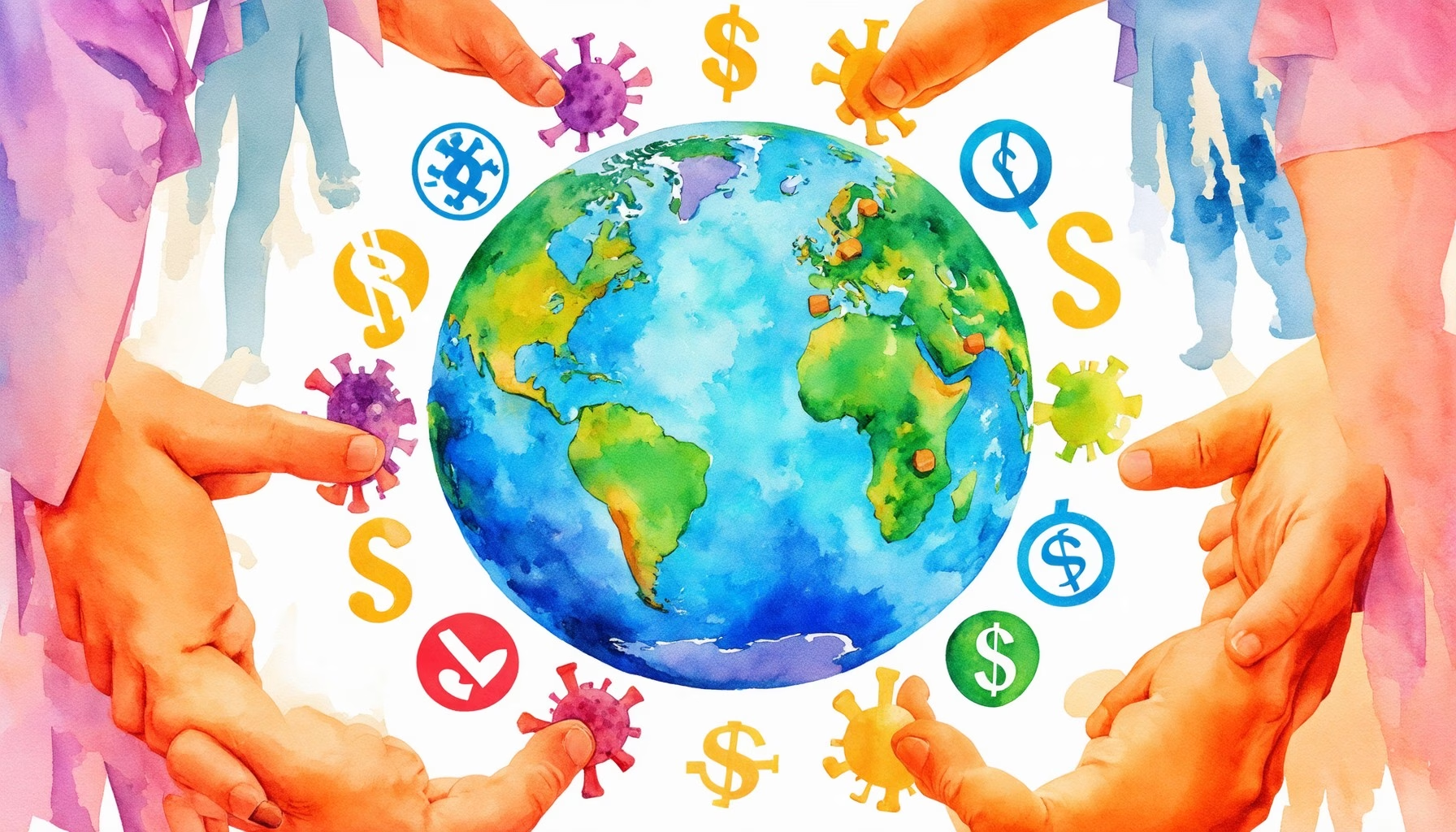Key Takeaways
- Explore a variety of government assistance programs for COVID-19 designed to support individuals and businesses during financial hardship.
- Understand eligibility criteria for COVID relief options, which vary based on income level, business size, and geographic location.
- Discover the importance of the Paycheck Protection Program (PPP) and other alternatives for securing financial aid for small businesses.
- Learn about state-specific initiatives, such as the California COVID-19 Relief Grant Program, offering targeted support to local businesses.
- Stay informed on the evolving landscape of economic relief programs and changes in eligibility from 2021 to 2022 to maximize your benefits.
In the wake of the COVID-19 pandemic, many individuals and businesses have found themselves navigating a complex landscape of financial uncertainty. This comprehensive guide to government assistance for COVID aims to illuminate the various economic relief programs available today, including loans, grants, and other forms of support. As we explore the intricacies of government assistance programs for COVID-19, we will address critical questions such as, Are COVID loans still available? and What is the SBA $10,000 grant? Understanding COVID relief options is essential for those seeking to alleviate financial burdens during these challenging times. We will also delve into state-specific assistance, with a particular focus on California, and examine how eligibility for these programs can vary. By the end of this article, you will have a clearer picture of how to access COVID finance assistance and the steps needed to secure the support you may qualify for. Join us as we navigate the evolving landscape of government assistance COVID and empower yourself with the knowledge to take advantage of available resources.
Government Assistance COVID: Overview of Available Programs
The COVID-19 pandemic has prompted various government assistance programs aimed at providing economic relief to individuals and businesses affected by the crisis. Understanding these programs is crucial for those seeking support during these challenging times. This overview will delve into the current landscape of government assistance related to COVID-19, including eligibility criteria and available resources.
Are COVID loans still available?
As of now, the COVID-19 Economic Injury Disaster Loan (EIDL) program is no longer accepting new applications. The U.S. Small Business Administration (SBA) officially ceased accepting applications for new COVID-19 EIDL loans and advances on January 1, 2022. Furthermore, as of May 6, 2022, the SBA has stopped processing requests for loan increases and reconsiderations for previously declined applications.
For businesses seeking financial assistance, it is important to explore alternative funding options. These may include traditional bank loans, grants from local or state programs, or other federal assistance programs that may have emerged since the end of the COVID-19 EIDL program. For the most accurate and updated information regarding available financial assistance, businesses can refer to the SBA’s official website or consult resources like Gov Guider, which provides guidance on navigating government assistance programs.
Government assistance covid eligibility
Eligibility for government assistance programs related to COVID-19 varies depending on the specific program. Generally, programs are designed to support individuals and businesses that have experienced financial hardship due to the pandemic. Key factors influencing eligibility may include:
- Income level: Many programs target low-income individuals and families, ensuring that those most in need receive support.
- Business size: Small businesses often have access to specific relief programs, such as grants and loans, designed to help them recover.
- Geographic location: Some assistance programs are state-specific, meaning eligibility may depend on where you reside.
To determine your eligibility for various government assistance programs, it’s advisable to review the requirements outlined by each program and consult with local agencies or resources like Gov Guider for personalized guidance.

Understanding COVID Relief Options
What to get when you have COVID?
When you have COVID-19, it is essential to understand the appropriate steps to take for effective management and recovery. Here’s a comprehensive guide based on current health guidelines and research:
- Monitor Symptoms: Keep track of your symptoms, which may include fever, cough, fatigue, and loss of taste or smell. If symptoms worsen, seek medical advice promptly.
- Home Treatment: Most individuals experience mild illness and can recover at home. Over-the-counter medications such as acetaminophen (Tylenol) or ibuprofen (Advil, Motrin) can alleviate fever and body aches. The CDC recommends these medications to help manage symptoms effectively.
- Hydration: Stay well-hydrated by drinking plenty of fluids, such as water, herbal teas, and broths. Proper hydration supports your immune system and helps alleviate symptoms.
- Rest: Prioritize rest to allow your body to recover. Sleep is crucial for immune function and overall health.
- Isolation: Follow CDC guidelines for isolation to prevent the spread of the virus to others. Stay in a separate room and use a separate bathroom if possible.
- Seek Medical Attention: If you experience severe symptoms such as difficulty breathing, persistent chest pain, confusion, or bluish lips or face, seek emergency medical care immediately.
- Follow-Up Care: After recovery, some individuals may experience lingering symptoms, known as “long COVID.” Consult with a healthcare provider for ongoing management and support.
For more detailed information, refer to the CDC’s official guidelines on COVID-19 treatment and management. Additionally, the National Institutes of Health (NIH) provides resources on the latest research and treatment options for COVID-19. Always consult with a healthcare professional for personalized advice and treatment options.
Economic relief program options for individuals and businesses
During the COVID-19 pandemic, various economic relief programs have been established to support individuals and businesses facing financial hardships. Understanding these options can help you navigate available resources effectively:
- Unemployment Benefits: Many states expanded unemployment benefits to include those who are self-employed or gig workers. Check your state’s unemployment office for specific eligibility and application processes.
- Paycheck Protection Program (PPP): This program offers forgivable loans to small businesses to keep their workforce employed during the pandemic. Businesses can apply through participating lenders, and funds can be used for payroll, rent, and utilities.
- Economic Injury Disaster Loans (EIDL): The EIDL program provides low-interest loans to small businesses and non-profits affected by COVID-19. These loans can be used for a variety of operational expenses.
- Direct Payments: The federal government issued stimulus checks to eligible individuals and families. These payments were designed to provide immediate financial relief during the pandemic.
- State-Specific Programs: Many states have launched their own economic relief initiatives, including grants and assistance programs tailored to local needs. It’s important to research what is available in your state.
For more information on government assistance programs for COVID-19, visit USA.gov for comprehensive resources and guidance.
Key Economic Relief Programs
The economic landscape during the COVID-19 pandemic has necessitated the implementation of various government assistance programs aimed at providing support to individuals and businesses. Understanding these programs is crucial for those seeking financial relief. One of the most significant initiatives is the American Relief Program, which encompasses a range of measures designed to alleviate the economic burden caused by the pandemic.
What is the American Relief Program?
The American Relief Program, officially known as the American Rescue Plan Act of 2021, is a comprehensive economic stimulus package aimed at providing relief to individuals, families, and businesses affected by the COVID-19 pandemic. Here are the key components of the program:
- Direct Payments: The program includes direct stimulus payments of up to $1,400 per eligible individual, with additional payments for dependents. This initiative aims to provide immediate financial relief to households.
- Unemployment Benefits: The American Relief Program extends unemployment benefits, providing an additional $300 per week to individuals receiving unemployment insurance through September 2021. This extension is crucial for those who lost their jobs due to the pandemic.
- Child Tax Credit Expansion: The program significantly increases the Child Tax Credit for 2021, raising it to $3,000 per child aged 6 to 17 and $3,600 for children under 6. This expansion aims to reduce child poverty and support families.
- Support for Small Businesses: The program allocates funds for the Paycheck Protection Program (PPP) to help small businesses retain employees and cover operational costs. It also provides targeted economic relief for sectors hardest hit by the pandemic.
- Funding for Vaccination and Testing: The American Rescue Plan invests in COVID-19 vaccination efforts and testing, ensuring that communities have access to necessary health resources to combat the pandemic.
- State and Local Government Aid: The program provides $350 billion in aid to state and local governments to help them manage budget shortfalls and maintain essential services during the pandemic.
- Housing Assistance: The plan includes provisions for rental assistance and support for homeowners facing foreclosure, addressing the housing crisis exacerbated by the pandemic.
For more detailed information, you can refer to the official text of the American Rescue Plan Act or resources from the U.S. Department of the Treasury and the Internal Revenue Service (IRS). These sources provide authoritative insights into the program’s implementation and its impact on the economy.
COVID-19 Government Assistance Programs for Small Businesses
Small businesses have been significantly impacted by the COVID-19 pandemic, leading to the establishment of various government assistance programs specifically designed to support them. These programs include:
- Paycheck Protection Program (PPP): This program offers forgivable loans to small businesses to help them maintain their workforce and cover essential expenses. The PPP has been a lifeline for many businesses struggling to stay afloat during the pandemic.
- Economic Injury Disaster Loans (EIDL): EIDL provides low-interest loans to small businesses that have suffered substantial economic injury due to the pandemic. This program aims to help businesses cover operating expenses and recover from financial setbacks.
- Targeted Economic Relief: Specific sectors, such as hospitality and tourism, have access to additional funding and resources to address their unique challenges during the pandemic.
For more information on these programs and how to apply, visit the U.S. Small Business Administration website, which offers comprehensive resources and guidance for small business owners seeking COVID finance assistance.
State-Specific Assistance: California Focus
California has implemented several targeted programs to provide government assistance for COVID-19 relief, particularly for small businesses and individuals affected by the pandemic. Understanding these state-specific initiatives can help you access the support you need during these challenging times.
What is the California COVID Relief Grant?
The California COVID-19 Relief Grant Program is designed to support small businesses and nonprofits that have been adversely affected by the pandemic and the associated health and safety restrictions. This program offers grants ranging from $5,000 to $25,000 to eligible entities, helping them to recover and sustain operations during these challenging times.
Key features of the California COVID-19 Relief Grant Program include:
- Eligibility Criteria: To qualify, businesses must demonstrate a significant impact from COVID-19, including revenue loss or operational disruptions. Specific eligibility requirements can be found on the official California state website.
- Application Process: The application process is managed by Lendistry, a financial technology company designated by the state to facilitate the distribution of funds. Applicants must provide necessary documentation, including proof of revenue loss and business operation details.
- Funding Use: Grant funds can be utilized for various business expenses, such as payroll, rent, utilities, and other operational costs, ensuring that businesses can maintain their workforce and continue operations.
- Program Updates: The program has undergone several updates to expand eligibility and increase funding availability, reflecting the ongoing needs of California’s small business community.
- Resources: For additional support, businesses can access resources through the California Governor’s Office of Business and Economic Development (GO-Biz) and local chambers of commerce, which provide guidance on navigating the application process.
Government Cash Assistance Programs in California
In addition to the COVID-19 Relief Grant, California offers various government cash assistance programs for COVID-19 that aim to support individuals and families facing financial hardships. These programs include:
- California Earned Income Tax Credit (CalEITC): This program provides cash assistance to low-income working families, helping to alleviate financial burdens during the pandemic.
- Disaster Relief Assistance for Immigrants (DRAI): This initiative offers one-time cash assistance to undocumented immigrants who are ineligible for federal relief programs, ensuring that all residents receive support.
- Temporary Assistance for Needy Families (TANF): TANF provides financial assistance to families with children, helping them meet basic needs during difficult times.
For more information on these programs and to determine your eligibility, visit the government benefits information page.

Grants and Financial Aid
In the wake of the COVID-19 pandemic, various grants and financial aid options have emerged to support individuals and businesses facing economic hardships. Understanding these opportunities is crucial for those seeking assistance. This section will explore the SBA $10,000 grant and the process for applying for the $7,000 government grant related to coronavirus relief.
What is the SBA $10,000 grant?
The SBA $10,000 grant refers to the Economic Injury Disaster Loan (EIDL) Advance, which provides eligible small businesses with immediate financial assistance. This grant is specifically designed for businesses located in low-income communities that previously applied for the EIDL Advance but did not receive funding due to a lack of program resources.
Key details about the SBA $10,000 grant include:
- Eligibility Criteria:
- Small businesses must be located in low-income areas.
- Applicants must have previously applied for the EIDL Advance and either received no funding or only partial funding.
- Funding Purpose:
- The grant is intended to help businesses cover immediate operational costs, such as payroll, rent, and other necessary expenses during economic disruptions.
- Application Process:
- Eligible businesses can apply through the SBA’s official website. It is crucial to provide accurate information and documentation to ensure a smooth application process.
- Impact of the Grant:
- This funding can be a lifeline for small businesses struggling to maintain operations during challenging economic times, allowing them to stabilize and recover.
For more detailed information, businesses can refer to the official SBA website or consult resources like Gov Guider, which provides guidance on federal assistance programs.
$7,000 government grant coronavirus how to apply
The $7,000 government grant related to coronavirus relief is part of various economic relief programs aimed at supporting individuals and businesses affected by the pandemic. To apply for this grant, follow these steps:
- Check Eligibility:
- Gather Required Documentation:
- Prepare necessary documents, including proof of income, business registration, and any other required information.
- Submit Your Application:
- Applications can typically be submitted online through the relevant government agency’s website. Ensure all information is accurate to avoid delays.
- Follow Up:
- After submission, keep track of your application status and respond promptly to any requests for additional information.
For further assistance with the application process, consider visiting Gov Guider for comprehensive guides on government assistance programs.
PPP Loans and Their Availability
Yes, you can still apply for a Paycheck Protection Program (PPP) loan, but it’s important to note that the program officially ended on May 31, 2021. However, if you are seeking financial assistance, you may still explore other options available for small businesses affected by COVID-19.
Can I still get a PPP loan?
While the PPP loan program has concluded, there are still avenues for financial support through various economic relief programs. The U.S. Small Business Administration (SBA) continues to process applications for other types of loans that can provide essential funding for businesses facing economic hardship. Here are some alternatives:
- Economic Injury Disaster Loans (EIDL): The SBA continues to process EIDL applications. These loans are designed to provide economic relief to businesses that are currently experiencing a temporary loss of revenue. For more information, visit the SBA’s Disaster Loan Applications website.
- Targeted EIDL Advance: If your business is located in a low-income community and has suffered a significant revenue loss, you may qualify for a Targeted EIDL Advance, which provides additional funding.
- State and Local Assistance: Many states, including California, have implemented their own relief programs for small businesses. These can include grants, loans, and other financial assistance. Check with your local government or business development agency for available resources.
- Additional Resources: Organizations like the Small Business Development Center (SBDC) and SCORE offer free business counseling and can help you navigate funding options.
COVID finance assistance through the Paycheck Protection Program
The Paycheck Protection Program was a crucial lifeline for many businesses during the pandemic, providing forgivable loans to help cover payroll and other essential expenses. Although the program has ended, understanding its impact is vital for future economic relief strategies. The PPP aimed to keep employees on payroll and assist businesses in maintaining their operations during unprecedented times.
For ongoing support, businesses can explore various government aid programs that offer financial assistance tailored to the needs of small businesses. Additionally, resources like government assistance programs can provide further guidance on available options.
Future of Government Assistance
Government assistance covid 2021 vs. 2022: What has changed?
The landscape of government assistance for COVID-19 has evolved significantly from 2021 to 2022. In 2021, numerous economic relief programs were launched, including the American Rescue Plan, which provided direct payments to individuals, extended unemployment benefits, and support for small businesses. By 2022, many of these programs began to phase out or transition into more sustainable forms of assistance.
Key changes include:
– **Reduction in Direct Payments**: The one-time stimulus checks that were prevalent in 2021 were not repeated in 2022, reflecting a shift towards more targeted assistance.
– **Focus on Long-Term Economic Relief**: Programs like the Supplemental Nutrition Assistance Program (SNAP) saw enhancements, while new initiatives aimed at job training and workforce development emerged to support economic recovery.
– **Eligibility Adjustments**: Many government assistance programs for COVID-19 now have stricter eligibility criteria, focusing on those most in need, which has impacted access for some individuals and families.
For more detailed information on available programs, visit the [official U.S. government website](https://www.usa.gov/).
Who received COVID relief funds and how it impacts future programs?
COVID relief funds were distributed to a wide range of recipients, including individuals, families, small businesses, and non-profit organizations. The primary beneficiaries included:
– **Individuals and Families**: Direct payments were issued to eligible citizens, with a focus on low- to middle-income households.
– **Small Businesses**: Programs like the Paycheck Protection Program (PPP) provided loans to help businesses retain employees and cover operational costs.
– **Non-Profits and Community Organizations**: Many received funding to support their efforts in providing essential services during the pandemic.
The distribution of these funds has significant implications for future programs. As the government assesses the effectiveness of past assistance, there may be a shift towards more targeted economic relief programs that prioritize vulnerable populations. Additionally, the data collected on who benefited from these funds will inform policymakers on how to structure future COVID-19 government assistance initiatives, ensuring they are more effective and equitable.
For further insights on government assistance programs, check out [ongoing government assistance](https://govguider.com/exploring-ongoing-government-assistance-your-guide-to-7000-grants-debt-relief-programs-and-free-financial-help/).




